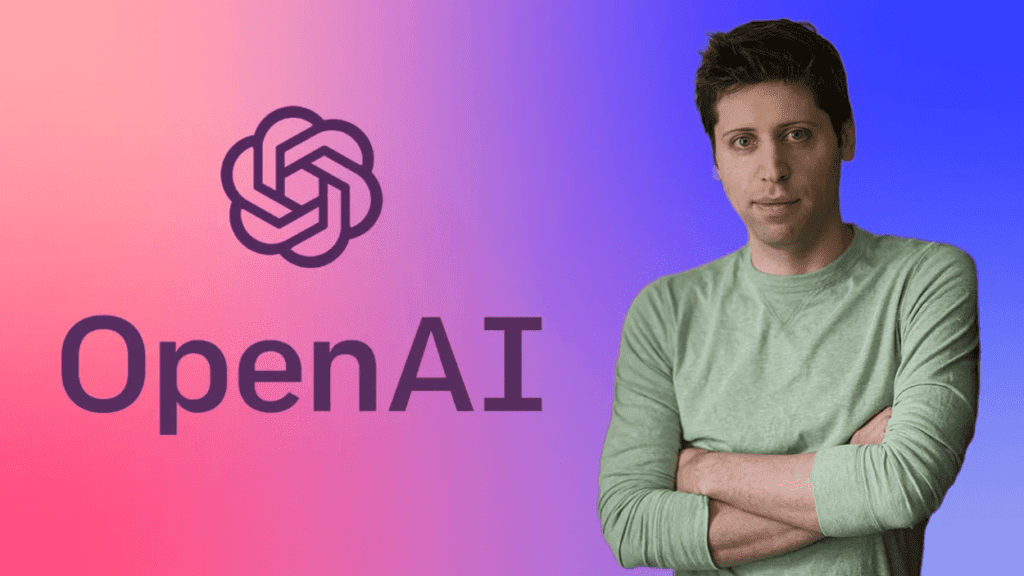How To Make Chat GPT Undetectable
Making content generated by ChatGPT “undetectable” typically refers to ensuring that the text appears natural and indistinguishable from human writing. Here are some tips to achieve that:
- Edit and Personalize: After generating content, review and tweak it to add your personal tone, style, or unique phrasing. This makes it less likely to match patterns associated with AI-generated text.
- Avoid Overuse of AI-Specific Patterns: AI often uses certain structures or phrases repetitively. Rewriting or rephrasing parts of the text can help break these patterns.
- Add Human-Like Imperfections: Humans make small errors or use informal language. Adding slight imperfections, like contractions, colloquialisms, or varied sentence lengths, can make the text feel more authentic.
- Use Multiple Sources: Combine AI-generated content with your own writing or other sources to create a blended, unique output.
- Paraphrase and Reformat: Tools like paraphrasers or rewriters can help transform AI-generated text into something less recognizable.
- Check with AI Detection Tools: Use AI detection tools (like OpenAI’s AI classifier or others) to test the content. If flagged, revise the text further to reduce detectability.
- Incorporate Context-Specific Details: Adding specific, nuanced details that reflect real-world knowledge or personal experience can make the content feel more human.
Table of Contents
Unveiling the Magic: Introduction to Chat GPT

ChatGPT is an AI-powered conversational tool developed by OpenAI. It is designed to understand and generate human-like text based on the input it receives. At its core, ChatGPT processes language using a large-scale model trained on diverse datasets, allowing it to engage in natural and meaningful conversations, answer questions, and respond creatively to prompts.
This AI works by analyzing the context of a conversation or a query and predicting the most logical or relevant response. It uses a form of machine learning called deep learning, which enables it to recognize patterns and gain a deeper understanding of language structures.
ChatGPT is widely used for various purposes, including customer support, writing assistance, content generation, language translation, brainstorming, and even casual chat. Its versatility has made it a go-to tool for professionals, businesses, students, and anyone looking for quick, intelligent, and thoughtful answers. It’s not just a virtual assistant—it’s like having a knowledgeable partner you can converse with on virtually any topic.
Who created ChatGPT?

OpenAI — an artificial intelligence research company — created ChatGPT and launched the tool in November 2022. It was founded by a group of entrepreneurs and researchers including Elon Musk and Sam Altman in 2015. OpenAI is backed by several investors, with Microsoft being the most notable. OpenAI also created Dall-E, an AI text-to-art generator.
How does ChatGPT work?

ChatGPT works through its Generative Pre-trained Transformer, which uses specialized algorithms to find patterns within data sequences. ChatGPT originally used the GPT-3 large language model, a neural network machine learning model and the third generation of Generative Pre-trained Transformer. The transformer pulls from a significant amount of data to formulate a response.
ChatGPT now uses the GPT-3.5 model that includes a fine-tuning process for its algorithm. ChatGPT Plus uses GPT-4, which offers a faster response time and internet plugins. GPT-4 can also handle more complex tasks compared with previous models, such as describing photos, generating captions for images and creating more detailed responses up to 25,000 words.
ChatGPT uses deep learning, a subset of machine learning, to produce humanlike text through transformer neural networks. The transformer predicts text — including the next word, sentence or paragraph — based on its training data’s typical sequence.
Understanding the Need for Undetectability
Why Undetectable Matters
In the vast digital landscape, an undetectable chatbot offers a more authentic and engaging user experience. We’ll delve into the reasons behind the importance of undetectability and how it elevates the interaction quality.
Crafting a Seamless Conversation
Natural Language Flow
Discover the art of crafting a natural language flow to make your Chat GPT interactions blend seamlessly with human conversations. We’ll explore techniques to eliminate robotic responses and create an immersive dialogue.
Incorporating Personalization
Learn how to add a personalized touch to your chatbot’s responses. Uncover methods to tailor interactions based on user preferences, creating a unique and memorable experience.
The Technical Side: Optimizing Chat GPT
Enhancing Response Time
Explore strategies to optimize Chat GPT’s response time, ensuring swift and efficient interactions. We’ll discuss the technical aspects without delving into complex jargon.
Fine-Tuning Language Style
Dive into the details of fine-tuning Chat GPT’s language style to align with specific contexts. This section provides practical tips on adjusting the tone to suit different scenarios.
Balancing Act: Privacy and Security
Securing User Data
Prioritize user privacy by implementing secure measures for data handling. We’ll guide you through steps to safeguard sensitive information, fostering trust among users.
Avoiding Red Flags
Delve into the potential red flags that might expose the artificial nature of Chat GPT. Learn how to navigate these pitfalls to maintain the illusion of an authentic conversation.
Burstiness refers to a pattern in data or language where events occur in short, irregular bursts or clusters rather than being evenly distributed over time or space. In other words, there are periods of high activity followed by periods of low activity.
Burstiness can be used in various fields, such as:
- Network Traffic Analysis: In network traffic analysis, burstiness can help detect and analyze sudden spikes in network activity, such as Distributed Denial of Service (DDoS) attacks.
- Social Media Analysis: In social media analysis, burstiness can help identify topics that generate sudden bursts of activity, such as trending topics or viral content.
- Natural Language Processing: In natural language processing, burstiness can be used to generate more diverse and interesting language models by introducing more variability in the generated text.
Overall, understanding and utilizing burstiness can help us identify and analyze patterns in data or language that might otherwise go unnoticed.
Tell Chat GPT to increase its ‘perplexity’
Perplexity is a measurement of how well a language model is able to predict a sequence of words or tokens. It is commonly used to evaluate the performance of natural language processing models, particularly in tasks like language modeling, machine translation, and speech recognition.
Perplexity is calculated based on the probability distribution generated by the language model for a given sequence of words. A lower perplexity score indicates that the model is better at predicting the next word in the sequence.
Perplexity can be used to compare different language models and choose the one that performs better on a given task. It can also be used to fine-tune the parameters of a language model, such as the learning rate, to improve its performance.
For example, if we are building a language model to generate text, we can use perplexity to evaluate the model’s ability to predict the next word in a given sequence. We can then adjust the model’s parameters and re-evaluate the perplexity score to see if the changes have improved the model’s performance.
Overall, perplexity is a useful tool for evaluating and improving the accuracy of natural language processing models.
Tell Chat GPT to raise its ‘temperature’
As an artificial intelligence language model, I don’t actually have a “temperature” in the traditional sense. However, “temperature” is a hyperparameter that can be applied to a language model like me to control the level of randomness and creativity in the text generated by the model.
When generating text, a language model like me assigns a probability distribution to each possible next word based on the input it has received. The temperature hyperparameter controls the shape of this probability distribution. A higher temperature leads to a more diverse and creative output, while a lower temperature leads to more conservative and predictable output.
When the temperature is set to a high value, the model is more likely to generate unusual and creative responses. However, this can also result in errors or nonsensical output. On the other hand, a low temperature can result in more accurate responses, but they may also be less interesting or imaginative.
The choice of temperature depends on the task and the desired output. For example, a high temperature might be desirable for creative writing or generating novel ideas, while a lower temperature might be better for more technical writing or generating responses to specific prompts.
In summary, temperature is a hyperparameter that controls the level of randomness and creativity in the output generated by a language model like me. The appropriate temperature setting depends on the specific task and desired output.
Elevate Your Chat GPT Experience
ChatGPT is a powerful tool that can help you generate creative ideas, learn new things, and boost your productivity. But to truly get the most out of it, it’s essential to approach it with the right strategies and mindset. This guide will walk you through practical tips to elevate your ChatGPT experience.
Frequently Asked Questions
Can ChatGPT be undetectable?
One of the best ways to make ChatGPT content undetectable is to create a humanlike persona, like ChatGPT DAN. This means writing in a style that is consistent with a personal voice and experience.
How do you avoid GPT detection?
GPT detectors are designed to flag repetitive phrases and sentence structures. To avoid being detected, try to avoid repeating the same words and phrases, and use a variety of sentence structures in your writing.
How do I humanize text from ChatGPT?
To humanize ChatGPT and rewrite sentence paragraphs, you can follow these strategies: Use Contractions: Incorporate contractions, such as “don’t,” “can’t,” or “it’s,” to make the language more conversational and informal.
How do I make my AI answer undetectable?
The best method to make AI content undetectable is using a relatively new tool that I found called undetectable.ai. It functions more or less like Quillbot, but it humanizes AI text to pass detection
How do I make ChatGPT generated text undetectable?
Rewrite and blend Content with Human-Generated Content: Until the AI content score is 10% or lower and there is no plagiarism, rewrite and blend the content with other human-generated content to make ChatGPT unnoticeable.


